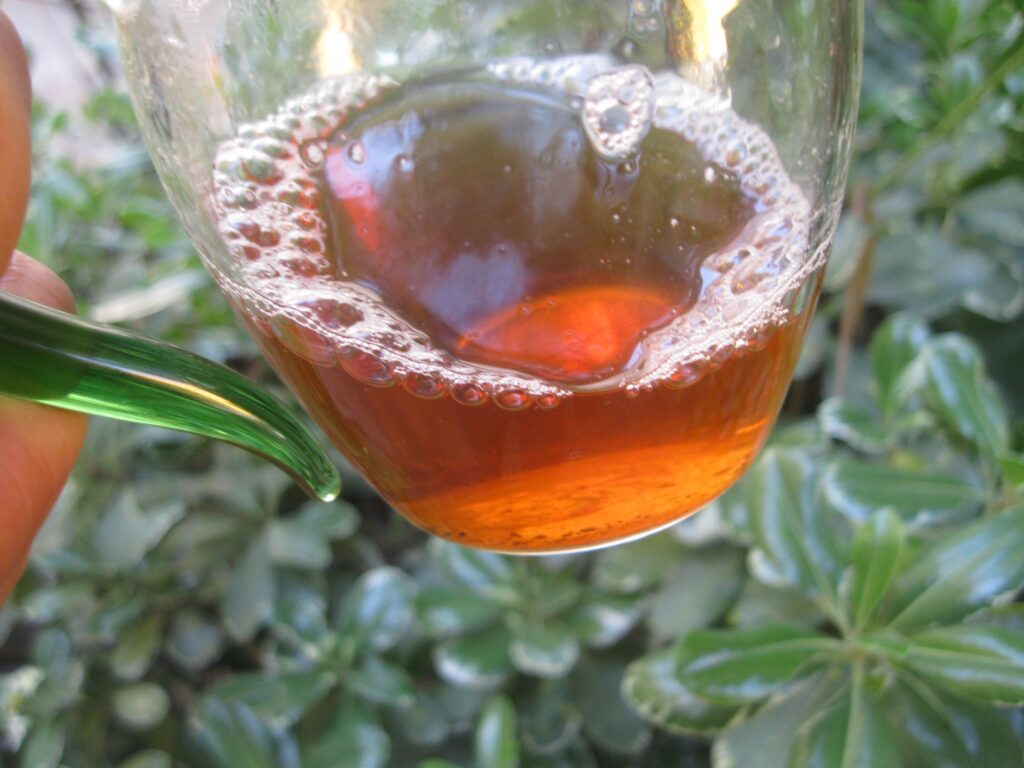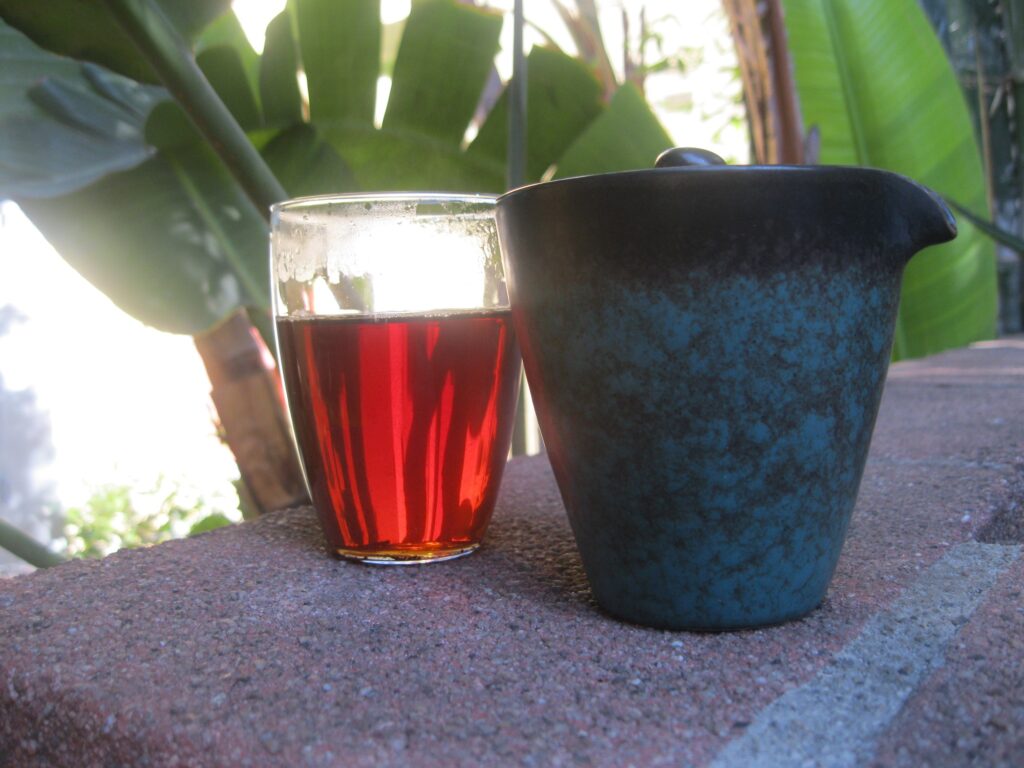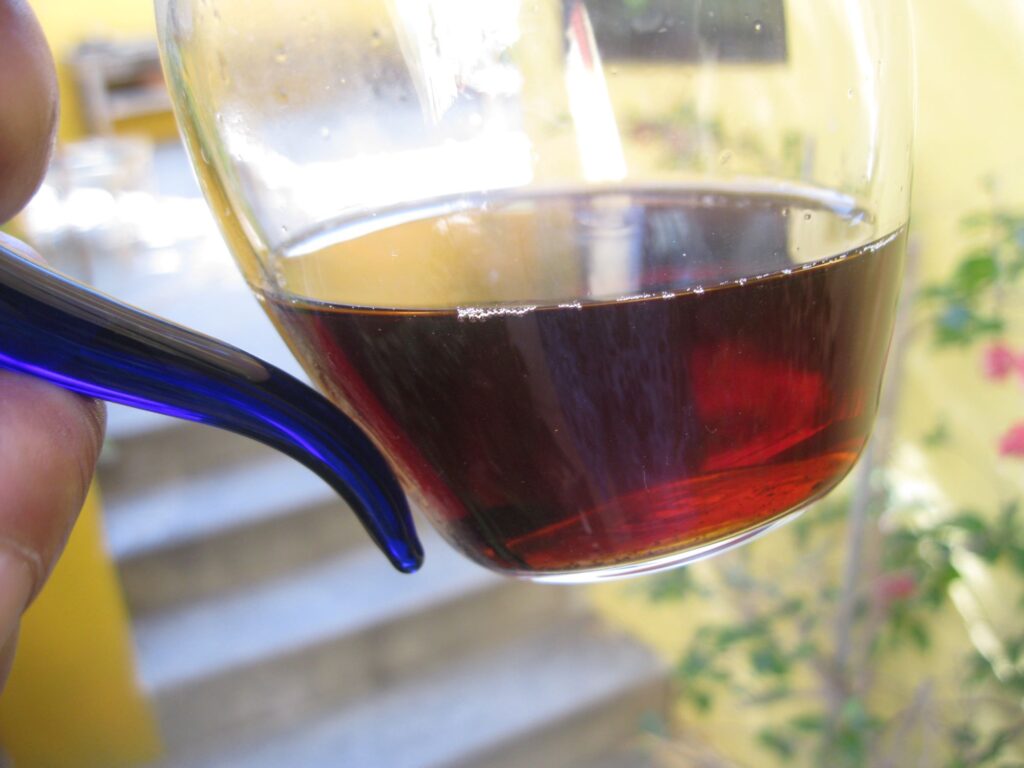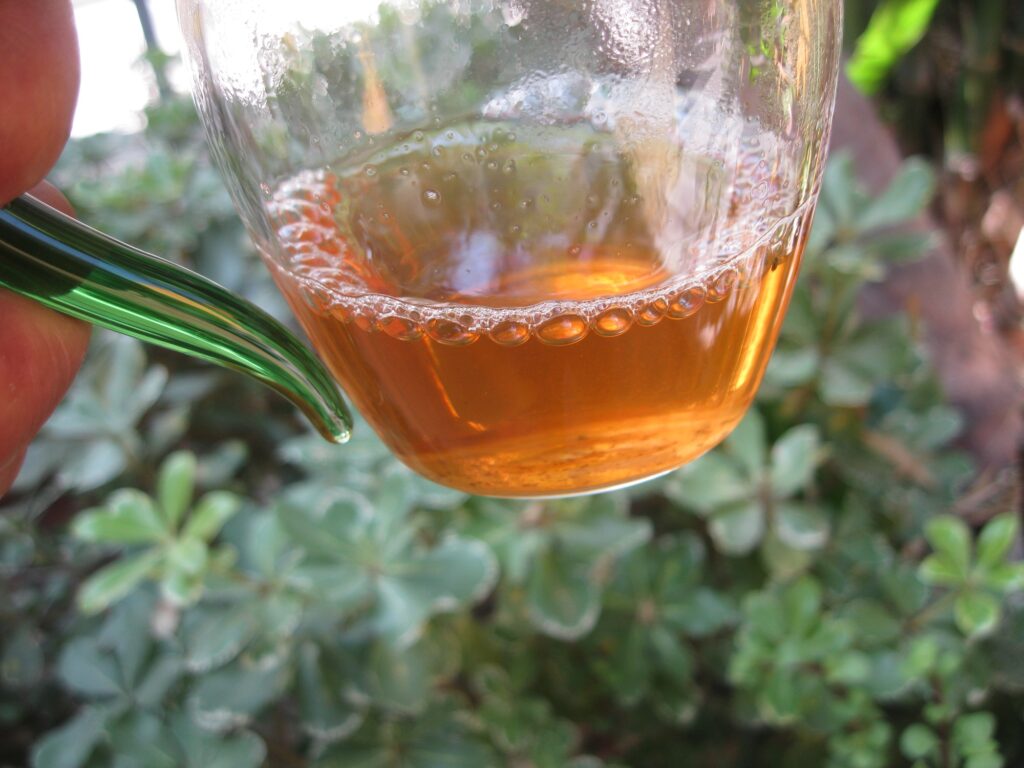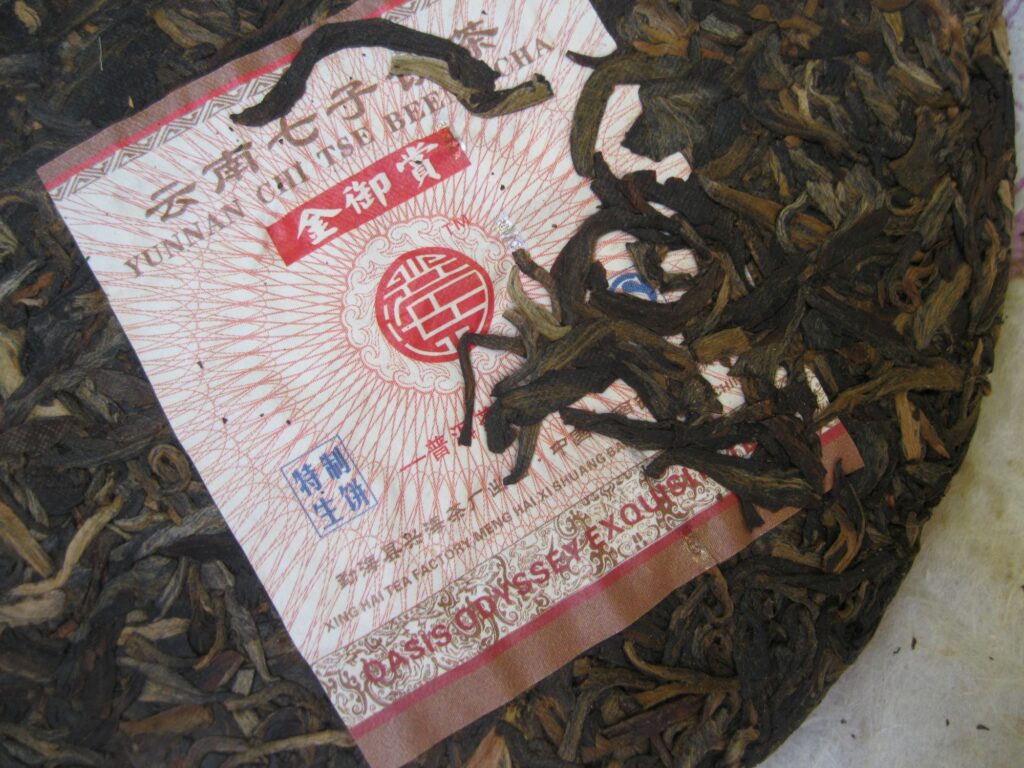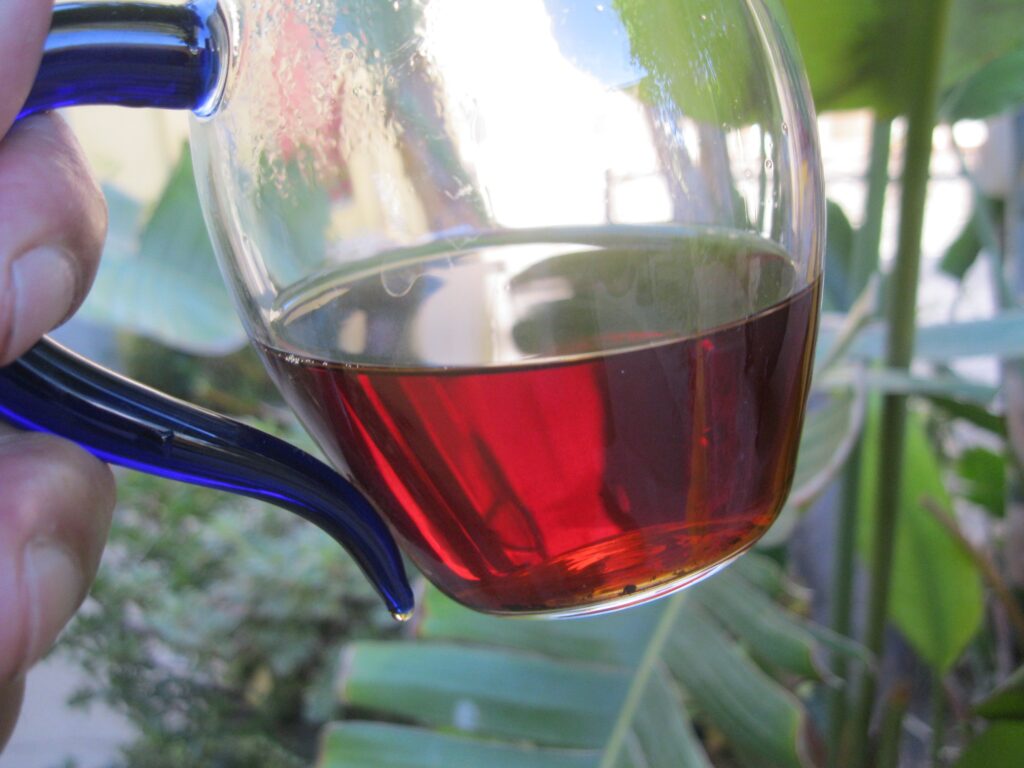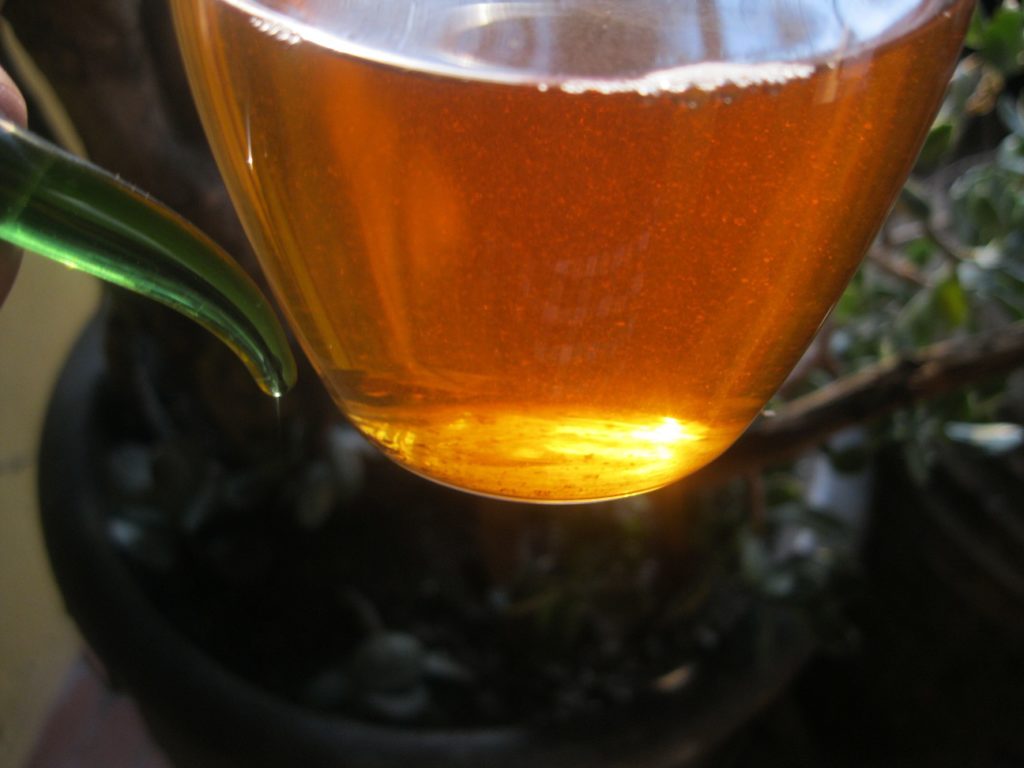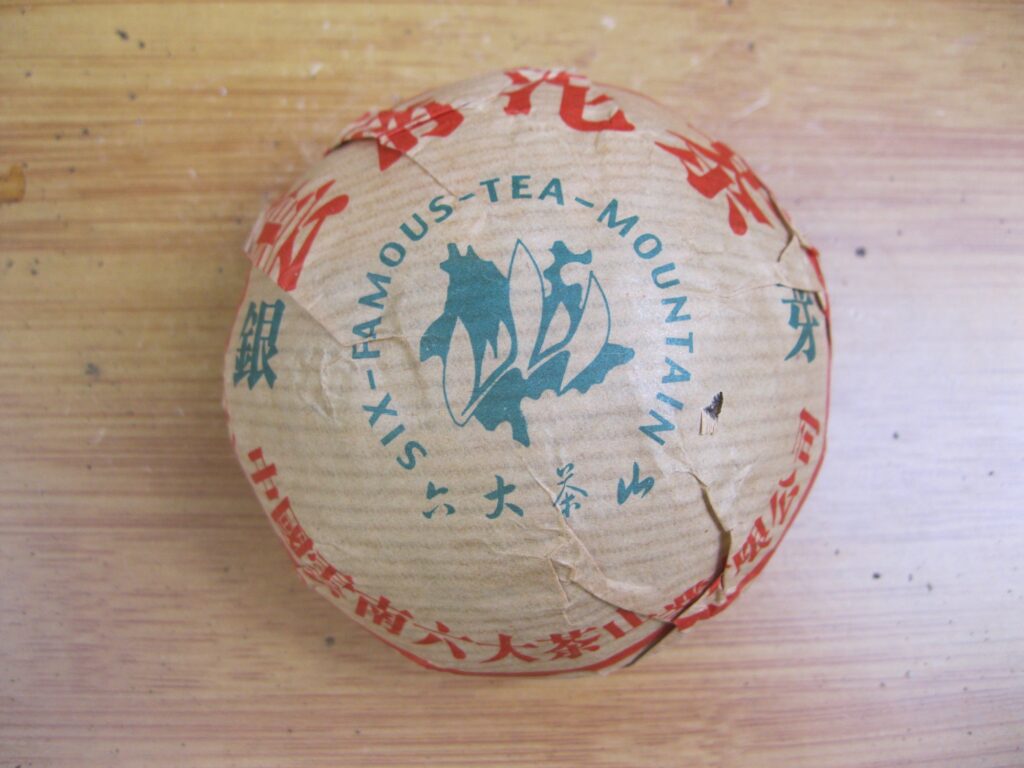’98 Manzhuan Storage Brief
Our first post of the New Year begins here on the fifth day (初五) of celebration with the ‘98 Manzhuan Storage Brief. Its journey offers some valuable insights into the particularities of storage, heavily stored productions in particular. As most readers are well aware, Guangdong storage presents with a profile that tends to be dirtier than productions stored in Kunming. This is due to the humidity of Guangdong and the taste preference of the region, which also includes HK, Taiwan, and Malaysia. The oft-used term “Guandong dry storage” can vary from one vendor to the next, some imparting very little humidity and others quite a lot. In largely sharing with the Mainland preference for drier storage, the Puerh Junky nonetheless holds a nuanced perspective toward humid raws, which shall be elaborated upon below.
Humid Raw Complexities
The ’98 Manzhuan introduces some of the complexities intrinsic to humid raws. These complexities involve how deeply humidity has penetrated the material as a result of the intensity and duration of applied humidity. Obviously, these factors greatly impact expression. Some storage can act as a countervailing force fine tuning the effects of heavy humidity. It took about six months for the Manzhuan to recover from its original storage home. Though the humidity was clearly quite penetrating, at the same time it was clear that the intensity of storage did not adversely impact the material as the expression was sweet and lively. This does not happen when a production is subject to intense humidity over a protracted period or scorched into appearing older than it is. In both instances the tea tends to lose all signs of life.
With junkacious sagacity (ahem), I placed my “at the ready Manzhuan cake” in mylar unsealed along with other Yiwu productions, including an even more wickedly humid production from David Lee Hoffman acquired around the same time. This is where the music takes a precarious foreboding tone for this is when the Yiwu box took on a decidedly heavier aroma, all within more or less innoculated with eau de dank. It’s my suspicion that the main culprit was the DLH production; just a whiff of it today turned my stomach. . . and it’s been out of the box and in the open since early Nov ’24! That was also when I removed the Manzhuan from the Yiwu box, as its developing trajectory did not compare favourably to the year prior.
Frozen In Time
There’s a particular misnomer that given X and Y conditions that one can keep their productions frozen in time. This is not too likely. However, there is the possibility for evaluating the effects of storage and modulating accordingly within certain parameters. In the mylar and Yiwu box, the Manzhuan became less ebullient and more bland, exactly as if it had been subjected to too much humidity for too long. This is what informed my taking it out of the box, and when things did not improve at the beginning of Jan ’25, it parted from the mylar as well.
The results on this 5th-day of the New Lunar Year are far better than satisfactory:
- the humid notes are mostly an afterthought;
- there’s full sweetness;
- the peach taste is uninhibited;
- Additionally, the broth is thick.
Some previous tastings may have been just as thick, but the lack of sweetness along with the very pronounced humidity possibly distracted from appreciating this. Of curiosity is whether its storied storage path in any way contributed to any of it current glories. It’s hard to say. It’s worth noting that the Manzhuan stash is not being stored in mylar but a stash box and given tastings therefrom, it appears that air flow factors significantly in producing the favourable results reported above.
Conclusions
In evaluating the ’98 Manzhuan these past few years, I’d venture that mylar isn’t the very best for humid productions if the desire is to bring out the most sweetness while lessening humidity. Sweetness and humidity may be inversely related provided conditions resembling those here in Los Angeles. There is a term called “tuicang” (退仓) which refers to post-humid storage specifically geared toward minimizing wet character. It’s probably the mark of a more finished product. Certainly since Nov ’24, the Manzhuan (from the “at the ready” Yiwu box) could be considered to have been undergoing tuicang.
Finally, the Manzhuan Storage Brief would be remiss were it not to highlight that this heavier Guangdong storage has not adversely affected the underlying spirit of the material, which is sweet, fruity, lively, and thick. Also as a complete sidenote, it’s worth mentioning that the appearance of Manzhuan is very much in the old-school vein, rather similar to all other terroir before the wispy whole-leaf style became the trademark of Yiwu offerings around ’04. You can gander here. Cashed leaves.

